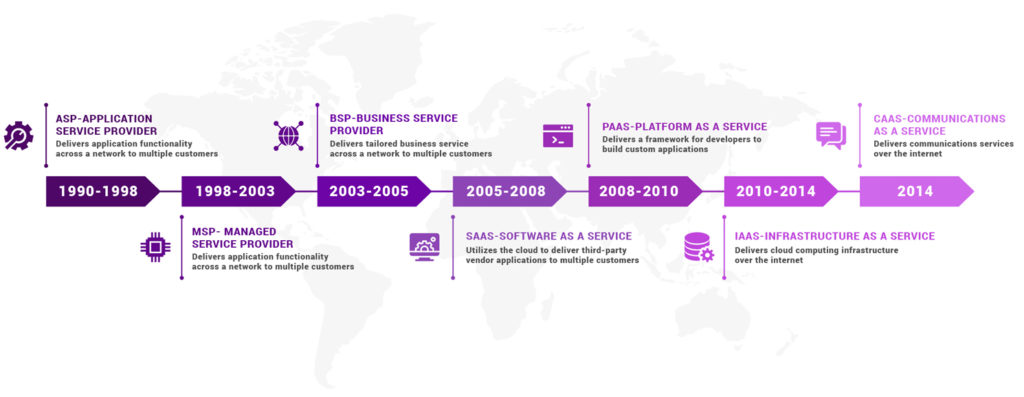A new trend has emerged and as human nature dictates, once we’ve gotten used to a new tendency it’s not just difficult to revert to the old way, but inefficient. Today’s particular trend was created by the current pandemic. It has provided an opportunity for all of us – but if you don’t buy in to the disruption you will certainly be disrupted. COVID has changed the way we do business – making continuity and scalability the new organizational priority. Are you ensuring that your company won’t fail in this “new normal?”
Regardless of turmoil outside our doors, the world is still running, businesses are still running. Meeting in-person has become negligible, creating a culture of virtual working. But when we say our people are virtual, should we instead say they are on the cloud? Even prior to the pandemic, many of us were already transferring our business, IT systems and any further business development onto the cloud. Is the cloud our new place of business?
What does it mean when people, processes, and all of your IT tools are on the cloud? How does it affect your business? If everything is on the cloud, what is really left of your physical business? Let’s explore this…
When you click on a function in the cloud, you aren’t really selecting “one thing”, you’re actually activating an entire ecosystem, what many call a platform, but is it fair to call it a platform? Human assets have been transferred to the cloud to co-exist with business assets creating an agile, transformative, technological environment, which allows for continuous collaboration, co-creation and cooperation at velocities unlike ever before!
All of this is possible through one common concept – your business as a platform. A completely integrated model shifted to a virtual environment makes for improved efficiency, better power of human capabilities, more outcomes from IT systems, and superior customer experiences. This is the power of a true business platform on a cloud – what we call Business Platform as a Service (BPaas).
This is not the first iteration of this concept, in fact the journey to BPaaS has been an over 20-year evolution of what were originally Application Service Providers (ASP), which connected businesses to networks via installed internet-based applications. Since then, we’ve observed MSP, BSP, etc. all in effort to revolutionize virtual business. Sound familiar? That’s likely because you’ve witnessed the journey of the newest digital service model – Sales as a Service (SaaS).
An expansion of the ASP infrastructure, SaaS hosts software on the cloud accessible by any web application. It’s become the standard for the modern workplace, allowing for the acceleration and digitization in business capabilities sustained over the last few years. Like its predecessors, it’s also seen a reformation in PaaS, IaaS, CaaS, etc. all of which provide individual aspects of cloud-based applications. What if we could combine all of these capabilities? That is what we achieve by making use of BPaaS.

Think of BPaaS as the service which brings together all the ‘as a Service’ applications to co-exist and create a virtually unlimited number of digital possibilities. An all-inclusive framework which is customized to your individual internal and external business needs and fully digitized for accessibility, scalability and celerity is not just revolutionary, but required now more than ever as we further become remote business practitioners with global audiences.
The idea behind this is similar to that of the “mall concept” where multiple storefronts are available in one convenient location. The ability to access multiple companies, applications, and services for multi-functionality is very much like the time-saving option of being able to shop at a variety of stores in one commodious venue. To adopt BPaaS is to form one investment in the place of ten! Considering the availability of business services and products these days, simplification of this kind will create a more streamlined working environment for all and allow for exponential growth.

In this pandemic world, the food industry has been amongst those hit the hardest. Limited capacity openings have severely restricted businesses from operating as intended effectively cutting off major revenue centers. This practice is simply not conducive to growth. Tech, however, has enabled businesses to grow even during these unprecedented times by reaching more users and consumers then physically possible. Patrons who typically meet at restaurants for social interactions are having similar experiences recreated through the use of virtual platforms. The market shift is also showing that customers are becoming more expectant of being able to find the information they need with ease. There are many technological solutions meeting these needs include CulinarySuite, an all-in-one food service management system, MealPlanner, a meal-ordering automation tool or FD Signage, which digitizes any display or menu.
All industries are making strides to move to a virtual workplace. Here are just a few examples of companies using virtual solutions to optimize their businesses:
- A Dairy Company Achieves 99% System Uptime with Azure Cloud Migration
- A US-based Furnishing Firm Adopts Azure Cloud – What Follows is Customer Satisfaction
With consideration to the pandemic, most working individuals are performing their roles from home. Virtual has allowed for this flexibility by providing effective productivity measurement tools and communication applications. If humans had a choice, we would likely have waited another 20 years to adopt the new way of working we’ve been forced to adapt to – but because of this, it’s important to look at our situation as an opportunity.
IT is further accelerating their business of transforming operations and placing processes on the cloud every day. Most importantly, people are leveraging their existing systems to bring about faster, digital experiences for their customers without needing to build completely new operations. Companies everywhere are realizing the capacity digital has to connect with a mass audience. It doesn’t matter the size of your business, if you want to expand, you’re going to want a platform to connect with your customers on a larger scale in the most favorable and efficient way possible.
In the end, is it fair to say that these businesses are transferring from a business-as-a-service to a business-platform-as-a-service model as a result of moving online? It’s important to recognize in this new world that businesses can coexist virtually, creating their own secure platforms and establishing their own virtual cultures.
Everything in the business of tomorrow is becoming a platform for virtual business. The more efficient we create, run and manage it, the faster we will grow after the pandemic world of today. If you don’t buy in now, you’ll be left behind.







